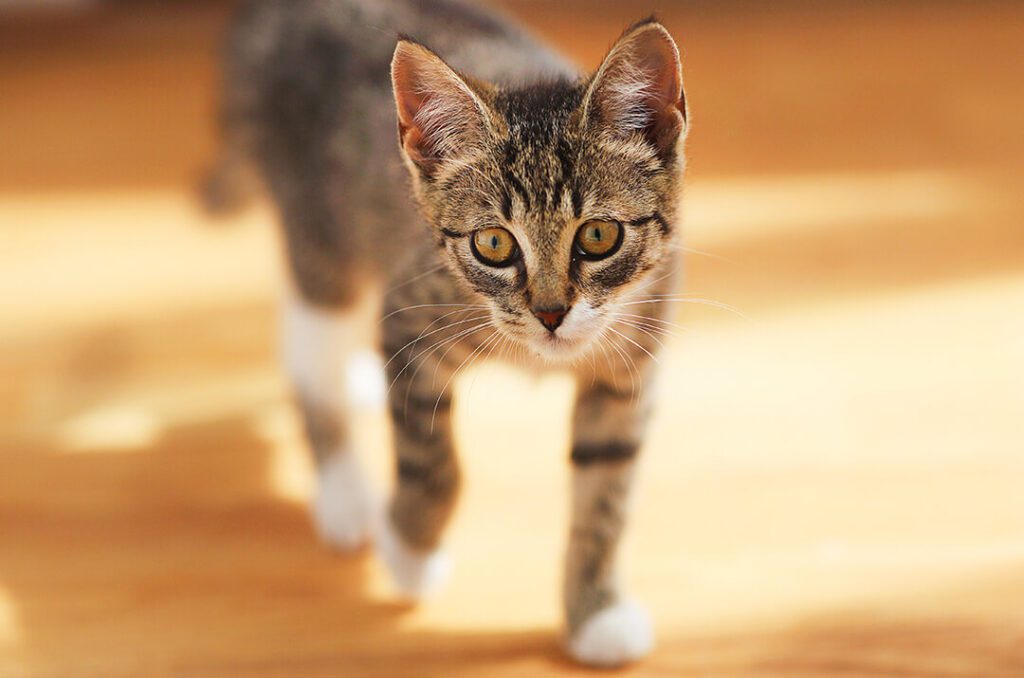
Kidney disease, or renal failure, is a common ailment among cats, particularly in their later years. It can be a serious and potentially life-threatening condition if left untreated. In this blog post, we will explore the causes, signs/symptoms, how to diagnose, and treatment options for feline renal failure to help you better understand and care for your furry friend.
Causes of Renal Failure in Cats
Before delving into diagnosis and treatment, it’s important to understand what causes renal failure in cats. There are two main types: acute renal failure (ARF) and chronic renal failure (CRF).
- Acute Renal Failure (ARF): ARF is often caused by a sudden event or toxin exposure, such as ingesting a poisonous substance, severe dehydration, urinary tract obstruction, or certain medications. It can be reversible if caught early and the underlying cause is addressed promptly.
- Chronic Renal Failure (CRF): CRF, on the other hand, is a progressive and irreversible condition that develops over time. It is more common in older cats and is often associated with natural aging processes, genetic factors, or long-term exposure to certain medications or toxins.
Common signs of renal failure in cats
- Increased Thirst (Polydipsia): Cats with kidney problems often drink more water than usual as their kidneys struggle to concentrate urine.
- Frequent Urination (Polyuria): Increased thirst leads to increased urination, resulting in your cat needing to use the litter box more frequently.
- Decreased Urination (Oliguria) or No Urination (Anuria): In some cases of acute renal failure, cats may produce very little urine or none at all.
- Urinary Accidents: Cats may have accidents outside the litter box due to their increased urgency to urinate.
- Weight Loss: Kidney disease can lead to muscle wasting and a decrease in appetite, resulting in weight loss.
- Poor Appetite (Anorexia): Cats with renal failure may lose their appetite and show disinterest in food.
- Vomiting and Nausea: Cats with kidney issues can experience nausea and may vomit, especially after eating.
- Bad Breath (Halitosis): Cats with kidney disease may develop ammonia-smelling breath due to the accumulation of waste products in the blood.
- Mouth Ulcers: Ulcers in the mouth or on the gums can occur in cats with kidney disease.
- Lethargy and Weakness: Cats may become lethargic, less active, and weak as kidney function declines.
- Dehydration: Dehydration can occur due to increased thirst and urinary losses. You can check for dehydration by gently pinching the skin on the back of the cat’s neck; it should return to its normal position quickly in a well-hydrated cat, but in a dehydrated cat, it may stay tented.
- Poor Coat Condition: Cats with renal failure may have a dry, unkempt, or scruffy coat due to the loss of essential nutrients and dehydration.
- High Blood Pressure (Hypertension): Kidney disease can lead to high blood pressure in cats, which can cause additional problems, such as retinal damage or neurological symptoms.
- Behavioral Changes: Cats with kidney disease may exhibit changes in behavior, such as increased restlessness or irritability.
Diagnosing Renal Failure in Cats
Recognizing the signs of renal failure in your cat is the first step towards diagnosis. Common symptoms include increased thirst and urination, weight loss, poor appetite, vomiting, and lethargy. If you notice these signs, consult your veterinarian for a proper evaluation.
To diagnose renal failure, your vet may perform the following tests:
- Bloodwork: A comprehensive blood panel can assess kidney function by measuring levels of creatinine, blood urea nitrogen (BUN), and other markers. Elevated levels indicate impaired kidney function.
- Urinalysis: A urinalysis can provide valuable information about kidney health, including the presence of protein or blood in the urine, which can be indicative of kidney disease.
- Imaging: In some cases, your vet may recommend imaging studies, such as ultrasound or X-rays, to evaluate the size and structure of the kidneys.
Treatment Options for Renal Failure in Cats
The treatment plan for renal failure in cats will depend on the type (ARF or CRF) and the severity of the disease. Here are some common treatment options:
- Fluid Therapy: Hydration is crucial for cats with kidney disease. Fluid therapy, administered either intravenously or subcutaneously, helps maintain proper hydration levels and flushes toxins from the body.
- Dietary Changes: Specialized kidney diets with reduced levels of protein, phosphorus, and sodium can help manage the progression of CRF and alleviate symptoms. Consult your vet for suitable dietary recommendations.
- Medications: Your vet may prescribe medications to manage symptoms and support kidney function. Common medications include phosphate binders, appetite stimulants, and medications to control high blood pressure.
- Monitoring: Regular check-ups and ongoing monitoring of your cat’s kidney function are essential. Your vet will adjust the treatment plan as needed based on your cat’s progress.
- Management of Underlying Causes: If your cat’s renal failure is due to an underlying condition, such as an infection or toxin exposure, addressing and treating that condition is crucial.
Renal failure is a serious health issue that can affect cats of all ages, but it becomes more common as they grow older. Recognizing the signs, seeking prompt veterinary care, and following a tailored treatment plan can greatly improve your cat’s quality of life and potentially extend their lifespan. Always consult your veterinarian for guidance on the best approach to managing your cat’s renal disease, and provide your feline companion with the love and care they deserve during this challenging time.

